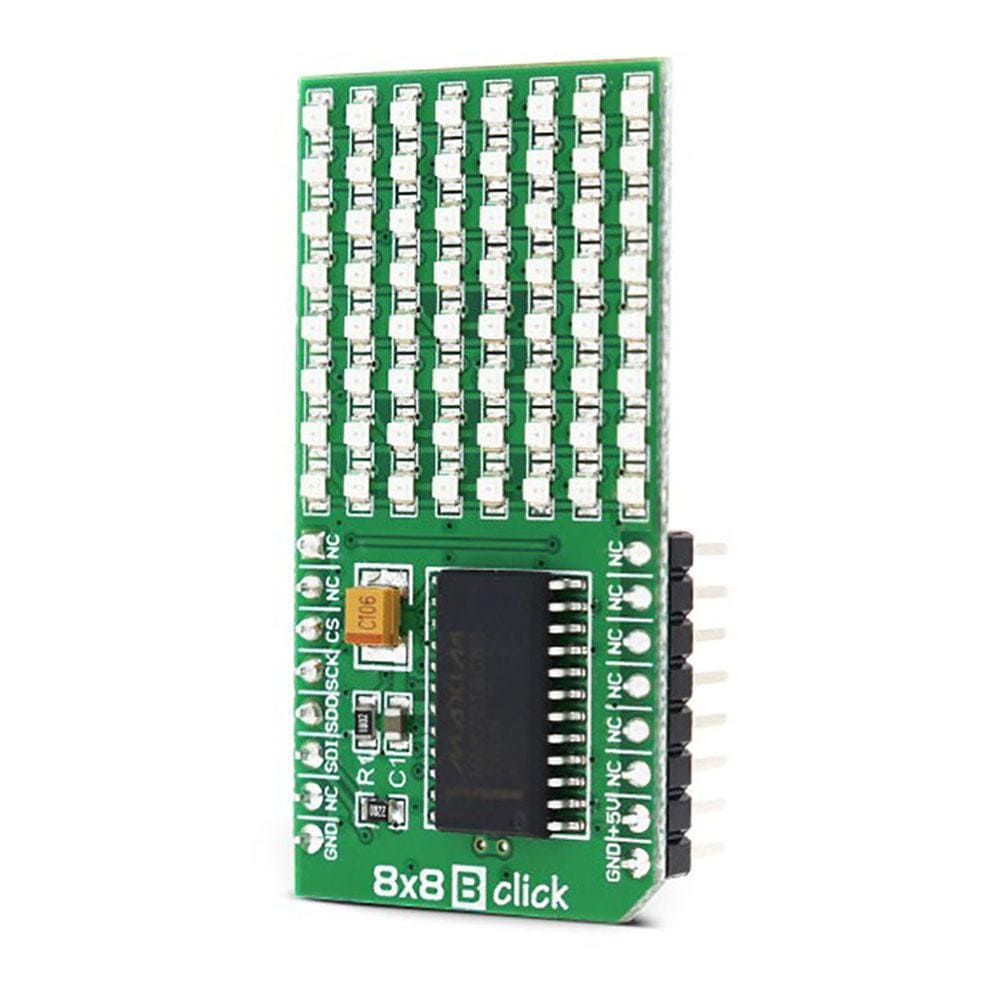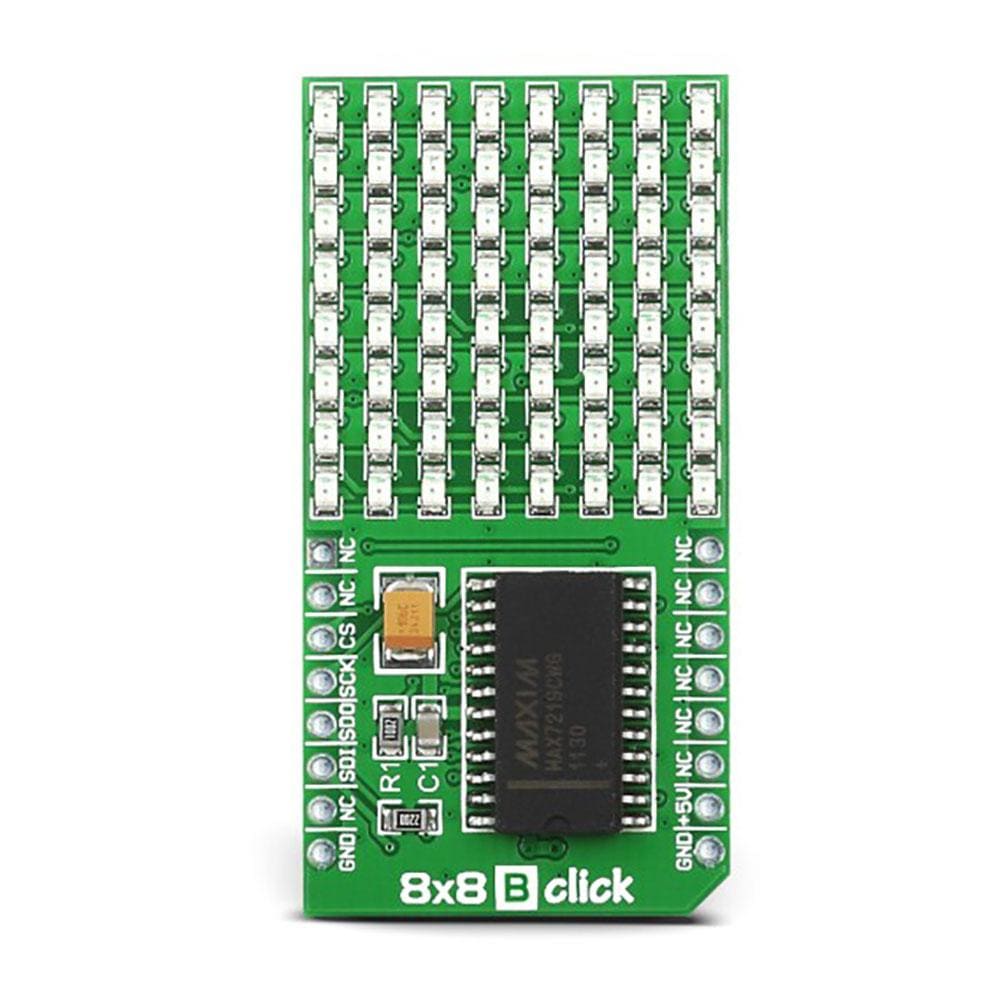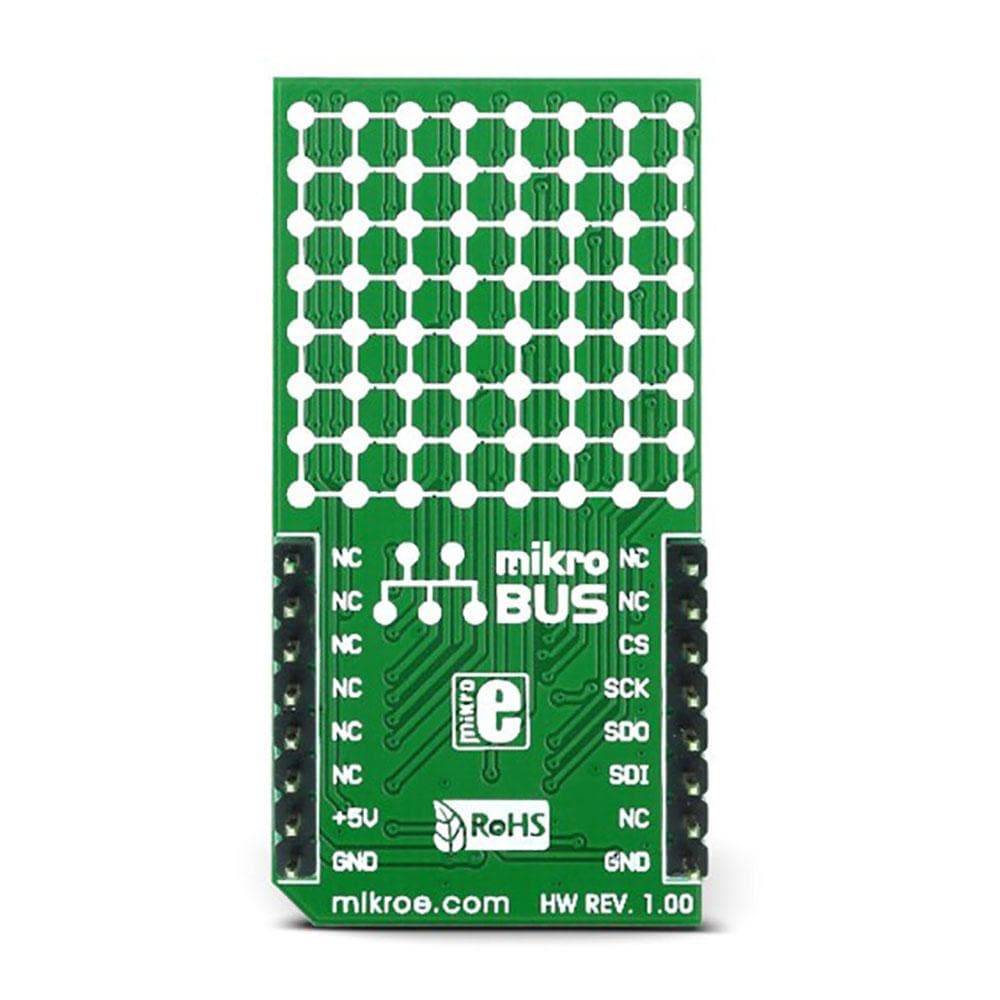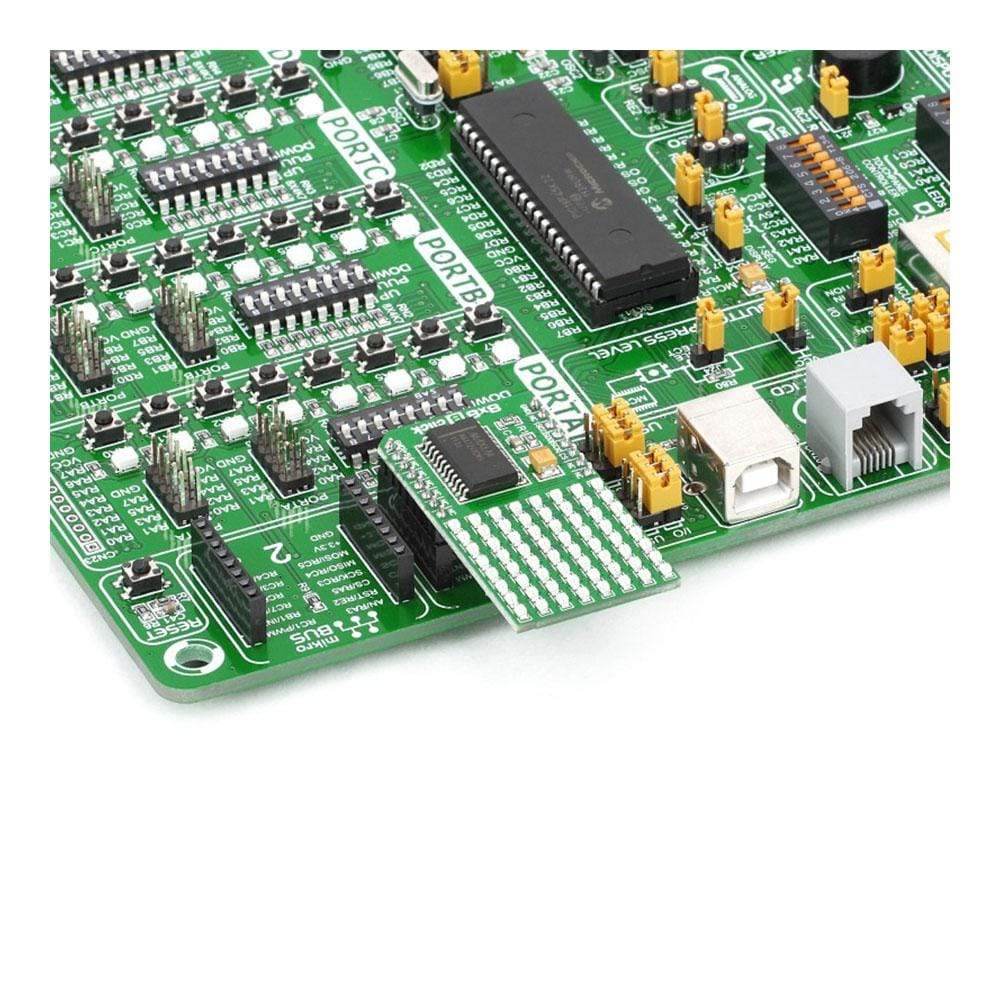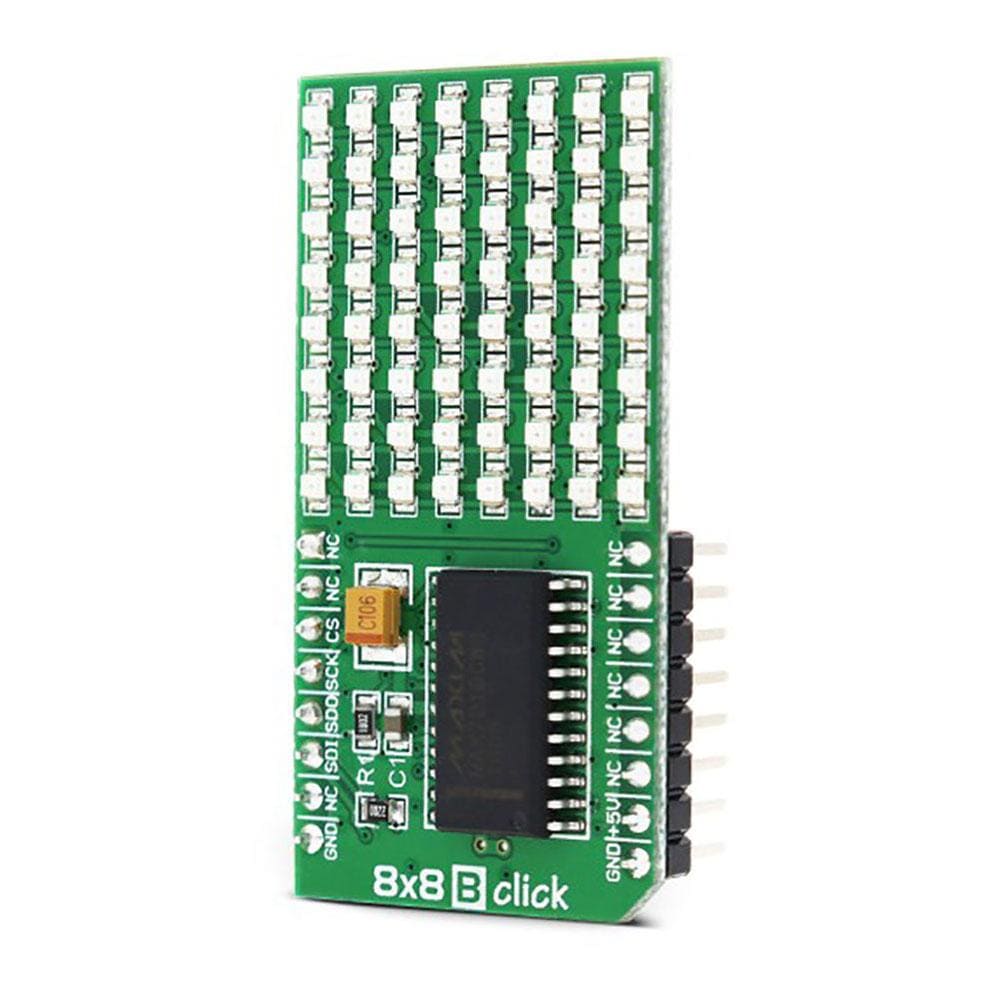
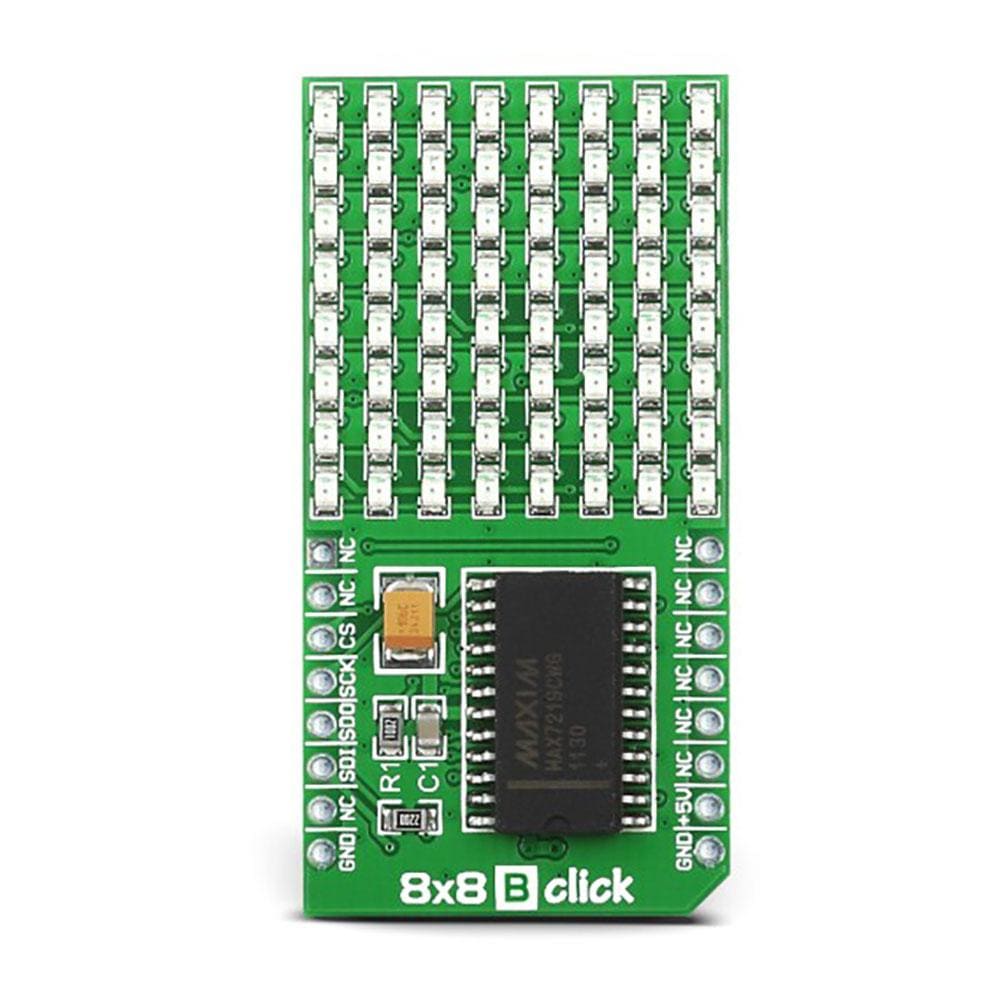
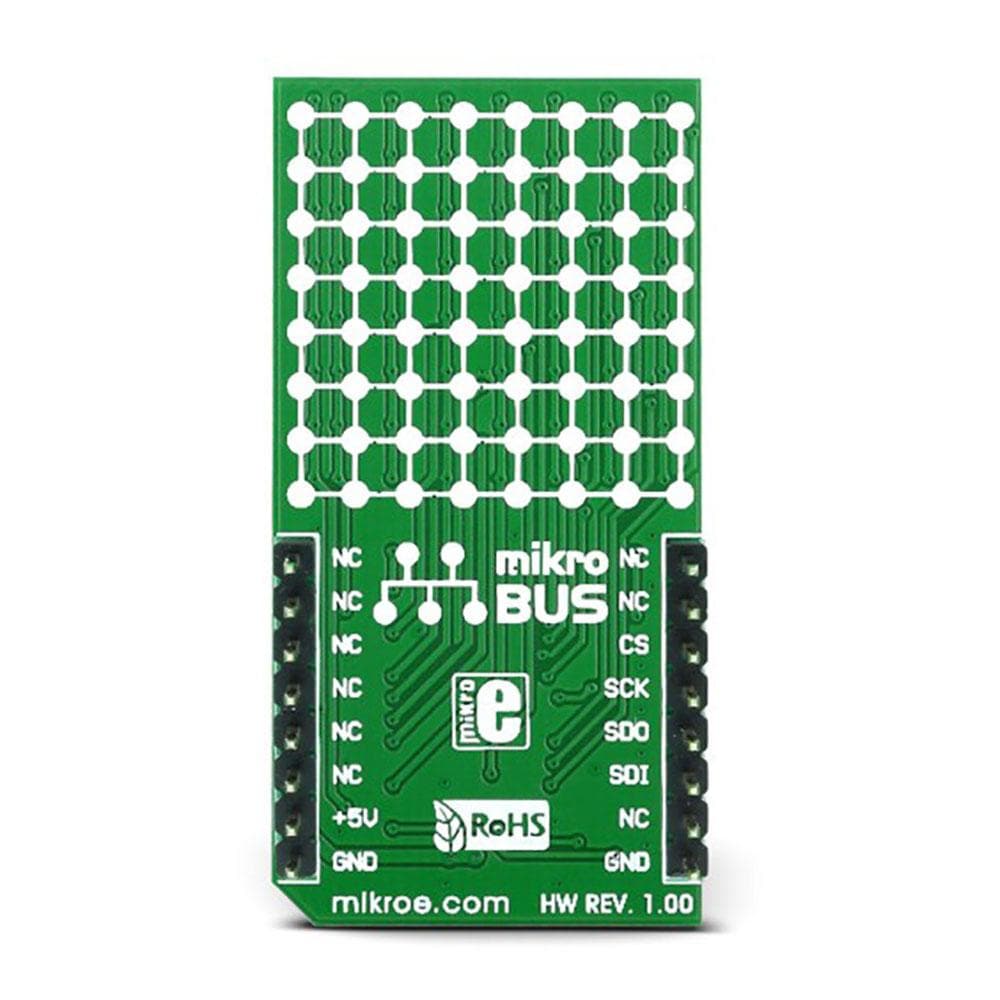
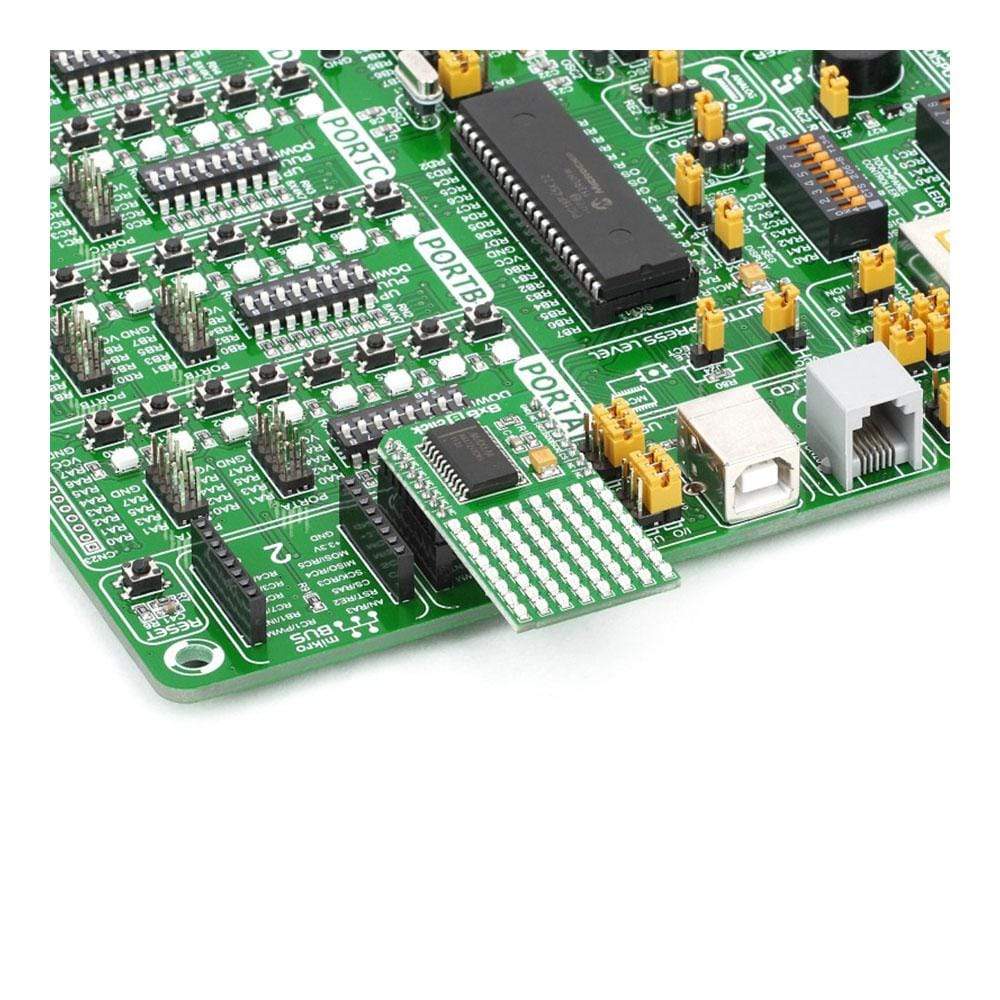
Overview
Introducing a blue serial 8x8 LED matrix display to your design with the 8x8 B Click Board™. This display add-on board in the MikroBUS form factor incorporates an 8-digit MAX7219 LED display driver module as well as 64 (8x8) blue-coloured LEDs. This click board is designed to communicate with the target board MCU through four MikroBUS SPI lines (DIN, DOUT, CLK and CS).
The serially-interfaced MAX7219 LED display driver features an on-chip BCD code-B decoder, digital and analogue brightness control, and an 8x8 static RAM that stores each digit. The 8x8 B Click Board™ makes an ideal choice for bar graph displays, industrial controllers, led matrix displays, and panel meters. It is available in a range of other colour options including red, green, and yellow.
Downloads
Intégrez un écran matriciel LED série 8x8 bleu à votre conception avec la carte Click Board™ 8x8 B. Cette carte d'extension d'affichage au format MikroBUS intègre un module de pilote d'affichage LED MAX7219 à 8 chiffres ainsi que 64 LED de couleur bleue (8x8). Cette carte Click Board est conçue pour communiquer avec le microcontrôleur de la carte cible via quatre lignes SPI MikroBUS (DIN, DOUT, CLK et CS).
Le pilote d'affichage LED MAX7219 à interface série est doté d'un décodeur BCD code-B intégré, d'un contrôle de luminosité numérique et analogique et d'une RAM statique 8x8 qui stocke chaque chiffre. Le 8x8 B Click Board™ est un choix idéal pour les affichages à barres graphiques, les contrôleurs industriels, les affichages matriciels à LED et les indicateurs de panneau. Il est disponible dans une gamme d'autres options de couleurs, notamment le rouge, le vert et le jaune.
| General Information | |
|---|---|
Part Number (SKU) |
MIKROE-1307
|
Manufacturer |
|
| Physical and Mechanical | |
Weight |
0.032 kg
|
| Other | |
Country of Origin |
|
HS Code Customs Tariff code
|
|
EAN |
8606015074443
|
Warranty |
|
Frequently Asked Questions
Have a Question?
Be the first to ask a question about this.

